The Alphabet of Paris: The City of Light from A to Z
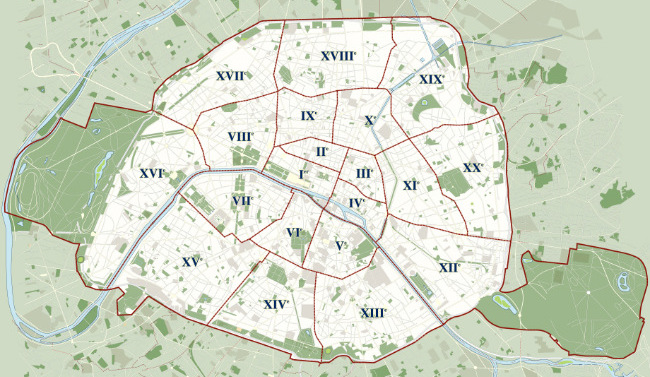

The unique charm of Paris is based upon its savoir-vivre, that je ne sais quoi… the indescribable, yet completely recognizable, way of life which has become embedded in our subconscious. To “think Paris”, as the writer Paul Valéry noted, is to know the true insider history of what makes this city a mélange of mortar and myth.
Arrondissement
In 1795 Paris was originally divided into 12 arrondissements (municipal districts), 1-9 on the Right Bank and 10-12 on the Left Bank. During the reconstruction of Paris in 1859 by Napoléon III and the inestimable Baron Haussmann, eight more districts were added. The city’s map was redrawn in the form of a snail’s shell beginning with the 1st arrondissement at the Île de la Cité and ending with the 20th at its eastern boundary.
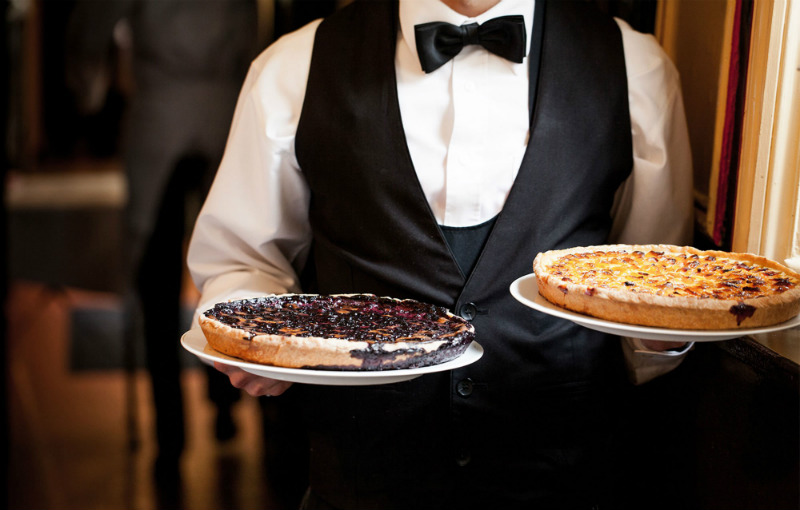
courtesy of Bistro Allard in St Germain
Bistro
A bistro, or bistrot in its original Parisian incarnation, is a small restaurant serving moderately priced simple meals in a modest setting. Bistros are defined mostly by the foods and wines they serve. French home-style cooking is typical. A bistro has different menus for lunch and dinner. No one knows the definitive etymology of this word, but the most popular version is that the term originated during the Russian Occupation of Paris in 1915. Whereas its kin, the brasserie (brewery), is a type of restaurant that evolved in Alsace, the leading French brewing region.
Champs-Élysées
Elysian Fields in French, the final resting place of the Gods in Greek mythology. The entire area encompassing the Champs-Élysées was originally fields for the farmers who sold their produce to local Parisian markets. In 1616, Marie de Medici, wife of King Henry IV, decided to clear most of the fields to extend the garden of the Palais des Tuileries. However in 1716, Guillaume de L’Isle’s map of Paris (the French cartographer known for his accurate maps of Europe and the newly explored Americas) still showed a short stretch of roads, fields, and market garden plots separating the grand axes of the Tuileries gardens from the planted avenue that was originally known as the Avenue des Tuileries. But in 1724, the Tuileries garden axis and the avenue were connected and extended, leading beyond the Place de l’Etoile (renamed Place Charles de Gaulle). The Palais du Louvre, then situated in open farmland (now the Place de la Concorde) flanked it on both sides.
Place Dauphine
The Place Dauphine is a public square located near the western end of the Île de la Cité in the first arrondissement of Paris. It was created by King Henry IV in 1607, the second of his projects for public squares in Paris, the first being the Place Royale (now the Place des Vosges). He named it for his son, the Dauphin of France and future Louis XIII, who had been born in 1601. The square, actually triangular in shape, can be accessed in the middle of the Pont Neuf, the oldest bridge in Paris which connects the left and right banks of the Seine by passing over the Île de la Cité.
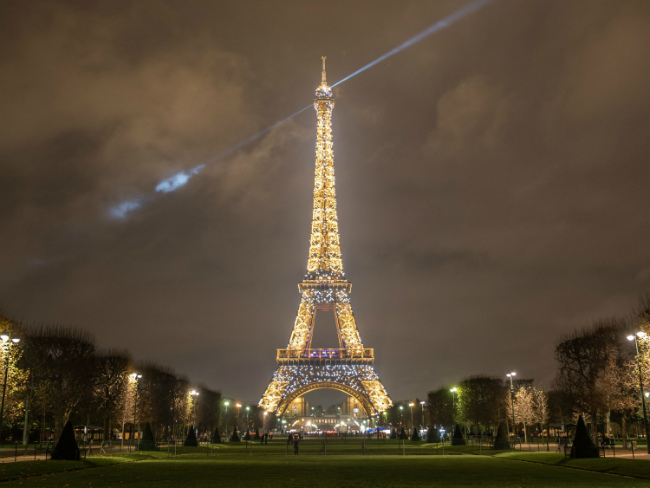
Photo: SETE/ E Livinec
Eiffel Tower
What would Paris be like without the iconic Tour Eiffel? Though never supposed to stay on the Champ de Mars, Gustave Eiffel designed the tower as a temporary construction for the 1889 Universal Exposition. It took two years, two months and five days to build. It looked so strange and became so popular that it fortunately wasn’t destroyed as planned. The tower’s ungainly appearance, that “disfigured” the cityscape, has 18,038 metal parts: 2,500,000 rivets, and 7,300 tons of iron, and is covered by 60 tons of paint.
Flying Buttresses
One of the greatest innovations of the Gothic era was the “flying buttress” system of structural support as seen on the cathedral, Notre Dame de Paris. This system allowed stone masons to erect soaring cathedrals with massive interior spaces, while allowing interior walls to exhibit massive stained glass windows.
Hector Guimard
His Art Nouveau entrances for the Métro (the brand new Parisian means of transport that was put in service for the 1900 World’s Fair) have become emblems of Paris. Violently criticized by his contemporaries who found his style too busy, Hector Guimard nevertheless created 141 metro entrances of which 86 still exist. They are now protected as monuments historiques, Édicule Guimard, by National Heritage of France.
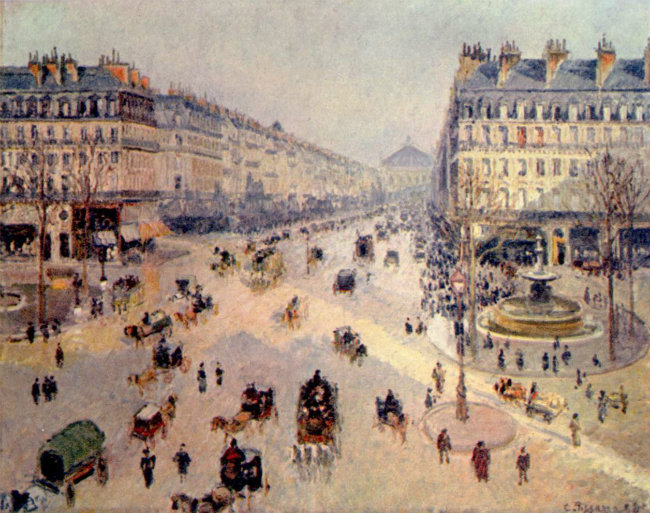
The avenue de l’Opéra, created by Haussmann, as painted by famed artist Camille Pissarro (1898)/ Public Domain
Baron Haussmann
Everything we love and hold dear about the City of Light today we owe to the singular brilliance of Baron Georges-Eugène Haussmann (1809-1891). Working in collaboration with Napoleon III, he was the city’s innovative and daring planner who gave us the Gare de Lyon, Gare du Nord, Gare de l’Est, Les Halles, Hötel Dieu Hospital, The Paris Opéra, the Fountain and Place Saint-Michel, the Rue de Rivoli; boulevards Raspail, Haussman, Saint-Germain, Voltaire and countless others; avenues des Gobelins, Mouffetard, Soufflot, Malesherbes, Victor Hugo, Kleber and Georges V; the Bois de Boulogne, Bois de Vincennes, Parc des Buttes Chaumont, Parc Montsouris, Parc Monceau, Jardin du Luxembourg, The Grande Hôtel du Louvre, the “modern” Champs-Elysées, and Père Lachaise Cemetery, where he was buried in 1891.
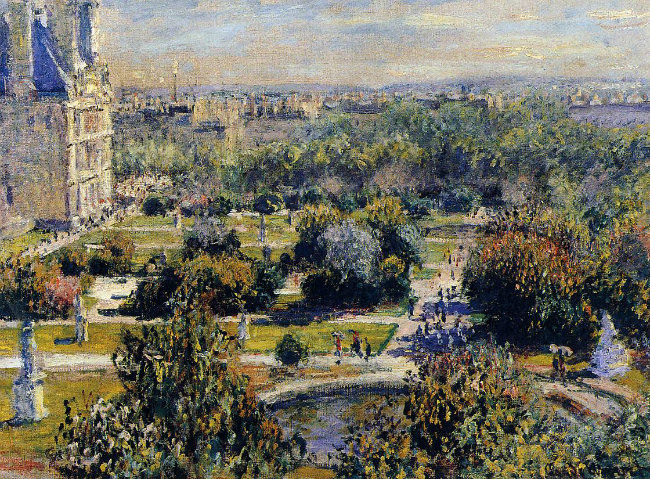
Les tuileries (étude), Claude Monet, huile sur toile, musée Marmottan-Monet, Paris
Impressionism
The Impressionist art movement was born in Paris in the second half of the 19th century by a group of unconventional painters that wanted to create a revolution in painting. The term ‘Impressionism’ comes from a painting by Claude Monet, which he called “Impression, soleil levant”, Impression, Sunrise. An art critic named Louis Leroy saw the painting at the first exhibition of the Salon des Refusès (works refused by the jury of the École des Beaux Arts – the fine arts school founded in 1671) and wrote a review in which he said that all the paintings an exhibition were just “impressions”. The word stuck. The impressionist artists central to the movement: Claude Monet, Edouard Manet, Berthe Morisot, Alfred Sisley, Pierre-Auguste Renoir, Paul Cézanne, Camille Pissarro, Mary Cassatt, and Henri Matisse, among others.

Jean Jaurès in Montevideo, Uruguay (1911). Public domain
Jean Jaurès
Jean Jaurès (1859-1914) was one of the founding members and leaders of the French Socialist Party, the forerunner to today’s Socialist Party. He also founded the socialist paper L’Humanité, still going today. He is remembered by socialists and non-socialists alike, for his anti-militaristic attempts to avert the outbreak of the First World War and was killed for it. Although Jaurès is unknown outside of France, a glance at any map of any French village or city reveals the extent of his impact on the country: thousands of streets, schools, metro stations and public squares are named after him. Perhaps only former president Charles de Gaulle has more French real estate dedicated to his memory. But his legacy extends further than place names. The biggest testament to Jaurès impact on French society is that, even today, his memory is still invoked by politicians from the far-left to the far-right.
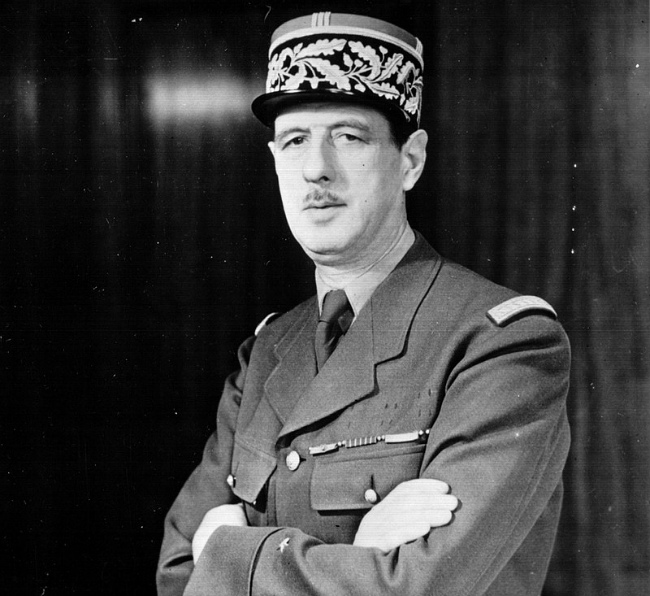
1942 portrait of General Charles de Gaulle in the Free French Forces wearing a kepi. Public domain.
Képi
A képi is a cylindrical cap worn as formal headwear by soldiers and gendarmes in France. As a form of headwear rarely found outside France or areas of French influence, the képi has become one of the classic symbols of France.

The Hotel Lutetia takes its name from Lutèce, the ancient name for Paris
Lutetia
The French Celts (Parisii) originally called the capital of their fishing village on an island in the river Sequanii, Lucotecia, “the place where water shines”. When Julius Caesar conquered France in 52 BC, he changed the name of the capital to Lutetia (Lutèce in French) from the word lutum meaning “mud” or “swamp”. He also changed the name of the river Sequanii (the Celtic water goddess) to Sequana that eventually translated into the river Seine, which derives its name from the small village Source-Seine, 19 miles to the northwest of Dijon.
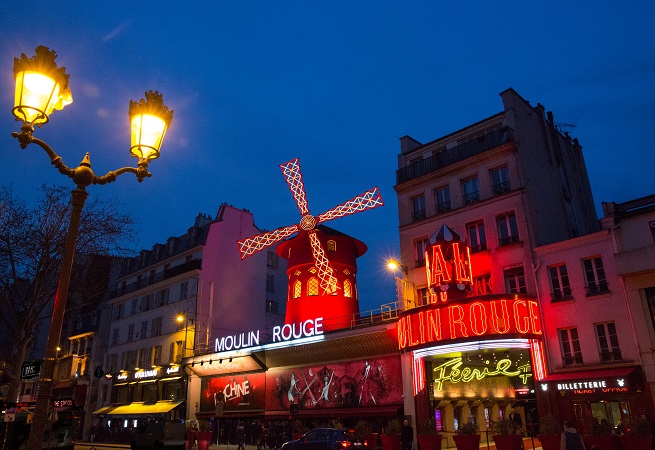
photo credit: the Moulin Rouge
Moulin Rouge
The Moulin Rouge, the red mill, is a cabaret near Montmartre in the Pigalle district, co-founded in 1889 by Charles Zidler and Joseph Oller. The original mill, which burned down in 1915, was instantly recognizable amidst the other buildings in the neighborhood. A windmill with large rotating vanes painted entirely in red was decorated with the figures of a miller and his wife, who appeared to exchange knowing glances. The interior decor embodied all the glamour and decadence of the Belle Epoque (1871-1914) period. The Moulin Rouge was the birthplace of the enthusiastic Can Can dance, originally introduced as a seductive dance by the courtesans who operated from the mill, Can Can revue was a form of cabaret entertainment uniquely all its own.
Notre Dame
The Cathedral of Notre-Dame de Paris, a masterpiece of Gothic architecture, is the most visited monument in France. It was built in the Middle Ages, at the far end of the Île de la Cité. Work started in the 13th century and finished in the 15th century. Notre Dame was badly damaged during the French Revolution, but the cathedral, as is stands today, was restored in the 19th century by the architect Viollet-le-Duc, some 855 years old. Its many visitors come to admire its stained glass and rose windows, towers, steeple, and gargoyles.
Obelisk
Set in the center of one of the most well known traffic circles in the world, the Place de la Concorde, the ancient Egyptian Luxor Obelisk, measuring 22.5 meters in height and weighing an estimated 227 tons, arrived in France on May 10, 1833 during the reign of King Louis-Philippe I. The obelisk and its pair, that still stands in front of the first pylon of the temple in Luxor, were the largest obelisks to have been erected by Ramses II. Its pedestal was given to the Louvre, which is where it can be seen today on display in the Egyptian galleries. It was thought to be too risqué for public consumption: baboons are depicted standing on their hind legs, their arms raised, their genitals clearly visible. In return, King Louis Philippe gave Egypt a large clock which is still in place in the clock tower of the Citadel of Cairo.

The Panthéon. Photo: Bonjour Paris
Panthéon
The Panthéon, located in the 5th arrondissement, was originally built as a church dedicated to Ste. Genevieve, but now functions primarily as a mausoleum for famous French heroes. It is an early example of Neoclassicism realized by the architect Jacques-Germain Soufflot, with its facade modeled after the Pantheon in Rome. Its large crypt, covering the whole surface of the building accommodates the vaults of some of the most famous French people: Voltaire, Rousseau, Victor Hugo, Émile Zola, Jean Moulin, Madame Curie, Louis Braille, Jean Jaurès, Soufflot, and most recently, Simone Veil.
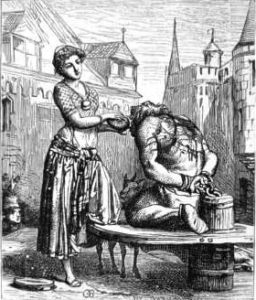
Esmeralda gives a drink to Quasimodo in one of Gustave Brion’s illustrations. Public domain
Quasimodo
The main protagonist of the 1831 Victor Hugo novel The Hunchback of Notre Dame was Quasimodo. Victor Hugo began writing largely to make his contemporaries more aware of the value of Gothic architecture, which was neglected, often destroyed, replaced by new buildings or defaced with newer style. For instance, the medieval stained glass panels of Notre Dame had been replaced by white glass to let more light into the church. Until recently The Hunchback of Notre Dame was believed to be completely fictional. But in 2010 academics uncovered references to a “humpbacked” carver in the memoirs of Henry Sibson, a 19th century British sculptor working at the cathedral around the time the book was written. The documents were found during a house clearance in Penzance, Cornwall, and are now part of the Tate Museum archive.
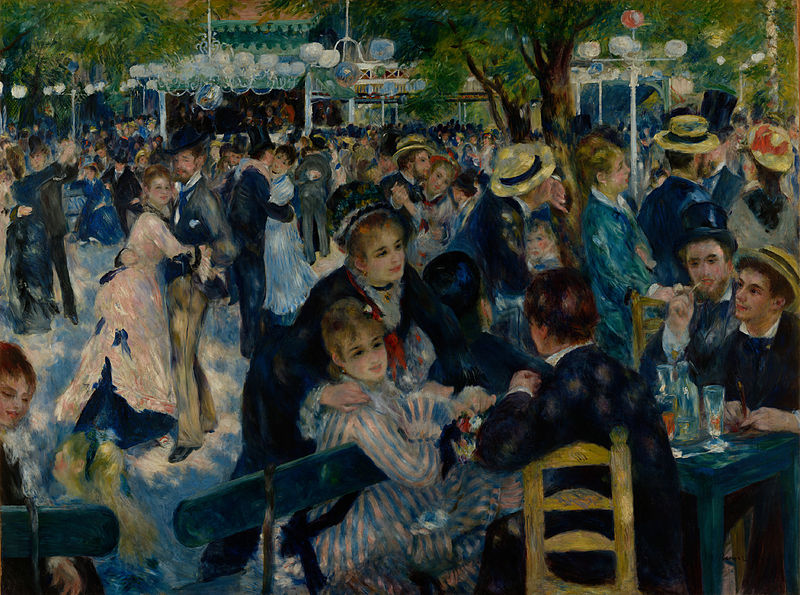
Auguste Renoir, Bal du Moulin de la Galette/ Public Domain
Jardins Renoir
Within walking distance from the Place du Tertre, three gardens dedicated to the painter Auguste Renoir surround the Museum of Montmartre, the oldest building in Montmartre. The gardens are named in memory of Renoir who lived there between 1875 and 1877, and painted several of his masterpieces including le Bal du Moulin de la Galette. Often overlooked, the Renoir Gardens offer beautiful views of the Clos Montmartre vineyard and surroundings. Built in the 17th century, the Museum of Montmartre, then known as the Bel Air House, served as a residence and meeting place for many artists including Auguste Renoir, Suzanne Valadon and Raoul Dufy.
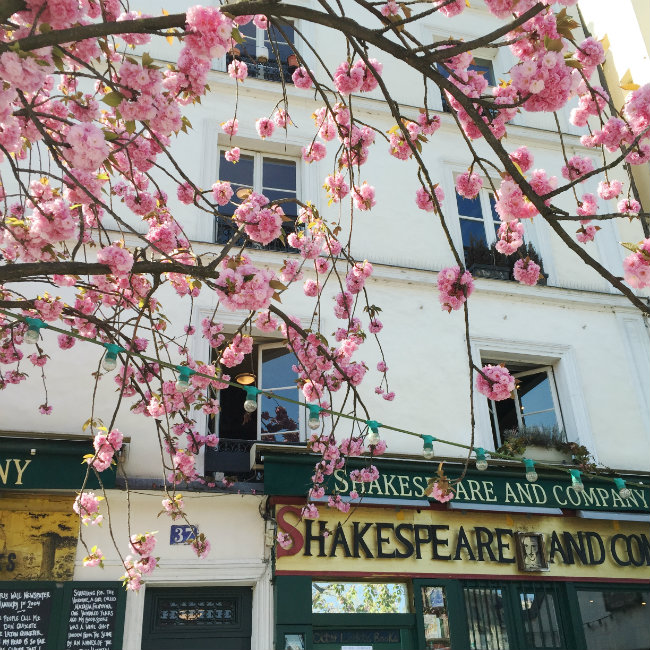
Shakespeare & Company by Corey Frye
Shakespeare & Company
In its first incarnation under Sylvia Beach (an American book seller and publisher who lived most of her life in Paris), this rags to literary riches bookstore was home to the Lost Generation of writers and artists who were searching to find their way out of the horrors of World War II. Many like F. Scott Fitzgerald, Ernest Hemingway and James Joyce found refuge in the store. Shakespeare & Company closed during the Second World War and was reopened by George Whitman in 1951 under a different name, though he subsequently re-named it Shakespeare & Company in 1964 after Beach’s death. Under George Whitman, the shop welcomed a new generation of writers, including Allen Ginsberg, Henry Miller, Anaïs Nin, Ray Bradbury, and William S. Burroughs. When his only daughter was born in 1981, he named her Sylvia Beach Whitman. By this time the bookstore was a celebrated center of English literature.

vintage poster courtesy of À la Civette
Tabac
À la Civette, the oldest Tabac, short for tobacconists (makers and purveyors of cigars and cigarettes), opened its doors in 1716. It stands at 157 rue Saint-Honoré, where it has stood for the last 140 years, just across from the Louvre Museum and the Palais Royale. In France, tobacco products can be sold only in certain bars and one of its more than 34,000 tabacs. Tabacs are protected and licensed by the state. They are identified by a distinctive elongated diamond sign. Tabacs can also sell newspapers, magazines, gifts, telephone cards and postage stamps. Many famous people visited À La Civette in the 18th century, among them the Italian lover Casanova, the American statesman, Benjamin Franklin, Voltaire, Denis Diderot and Jean-Jacques Rousseau.
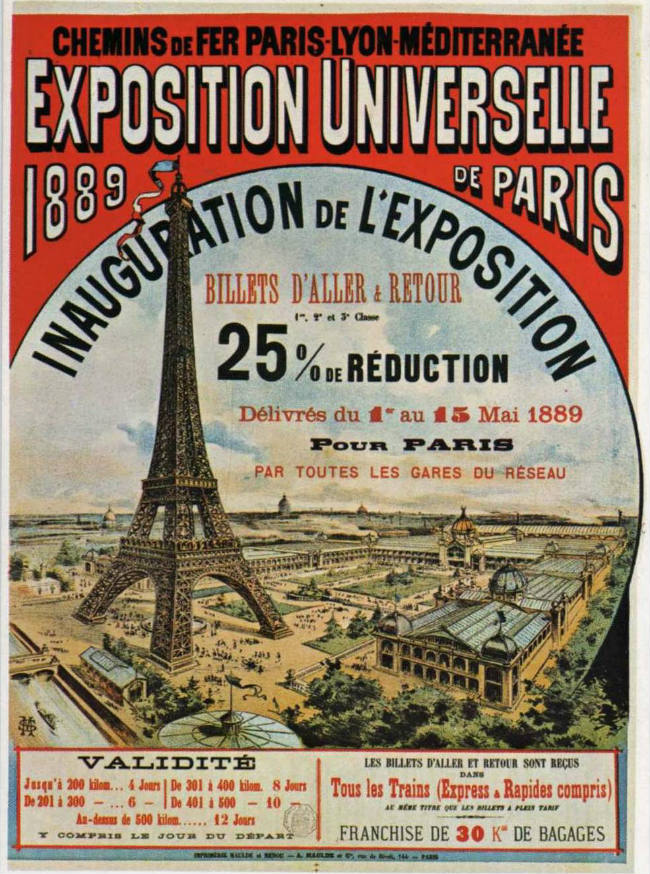
Paris World’s Fair of 1889. Public domain
Exposition Universelle
The original 19th century Exposition Universelle, or Paris World’s Fair, showcased the best and latest innovations in agriculture, industry and art. In 2025, some hundred and seventy-years later, a new fair, called ExpoFrance, will open its doors. At the heart of the exposition will be a giant globe, 127 meters in diameter (1/100,000th of the Earth). This “innovative center” will be composed of both glass and interactive screens on which the cultures of the world will be presented in virtual reality. According to Jean-Christophe Fromantin, president of ExpoFrance 2025, ”The idea is to make the event the living vector of all the contributions involved in the enrichment of knowledge.” ExpoFrance will be financed without public funds, like the World Fair of 1889 that saw the creation of the Eiffel Tower.

Louis Vuitton ad on a Bayard-Clément truck (1906). Collection Jules Beau. Public Domain
Louis Vuitton
In the world of fashion brands, Louis Vuitton handbags and accessories are the pinnacle of luxury and recognizable everywhere in the world. His son Georges created the famous LV design of alternating, entwined initials, diamond points, stars and quatrefoil flowers, called Damier (checkerboard in French), which became the earliest example of fashion branding. The patent of the monogram on canvas was originally filed in 1905 in an attempt to stop counterfeiting.
Avenue du Président Wilson
Most major cities in France have a Place or Avenue du Président Wilson, to commemorate the key role that Woodrow Wilson, the 28th President of the United States played at the Paris Peace Conference that formally ended the First World War. The 1915 sinking of the Lusitania (a passenger ship carrying American citizens) and Germany’s expansion of submarine warfare in the Atlantic, fueled increasing U.S. anger toward Germany. However, it wasn’t until 1917 that Wilson decided to ask Congress for an official declaration of war. American troops later joined their British and French allies in fighting the Central Powers until an armistice was reached in November 1918. After the war, in which approximately 117,000 American soldiers died, Wilson promoted the idea of a League of Nations, an international organization for resolving conflicts between nations which he hoped would peacefully arbitrate international conflicts and prevent another war. The plan emphasized intervention over isolation, and introduced the idea of a multi-national peace organization. The League of Nations failed, largely as a result of negative propaganda in the U.S., but it was the precursor to the United Nations, which was established in the wake of the Second World War.
St. Francis Xavier
Saint-François-Xavier Church (or Saint-François-Xavier-des-Missions-Etrangères in full) is located in the affluent 7th district, a stone’s throw from the Hôtel des Invalides. It is dedicated to Francis Xavier of Basque origin, one of the founders of the Jesuit Order. The church was completed in 1873 and over the years has gathered a wealth of religious art objects, including The Last Supper by Tintoretto. But what makes Saint-François-Xavier Church so special is that it houses the shrine containing the preserved body of Sainte Madeleine-Sophie Barat, the holy woman who from 1806 to her death in 1865, worked tirelessly to help educate young girls. As a result, several girl schools were founded during the reign of Napoleon III. She is considered one of the earliest feminists in French history.

Approaching the Chateau de Versailles. © Laurent Lanée
Yvelines
The département of Yvelines is part of greater Paris’ Île de France region. Its capital, Versailles, flourished around Louis XIV’s château. Versailles was also the French capital for more than a century under the Ancien Régime, and again between 1871 and 1879 during the early years of the Third Republic. The eastern part of the department, as well as its northern part along the Seine, is part of the Paris metropolitan area, but the rest of the department is rural, much of it covered by the Forest of Rambouillet. Many castles from the 17th and 18th century are situated there: Chateau des Voisins, Chateau de Louveciennes, Chateau du Pont, Chateau du Parc, Chateau des Sources, and Chateau Saint-Germain-en-Laye. Many museums are located in this rich department as well: the Museum of National Antiques, Museum of River and Canal Craft, Horse-drawn Coach Museum, Toy Museum, Sheep Museum, and the Cloth Museum of Jouy. Many writers’ and artists’ houses are there: André Derain’s house, Émile Zola’s house, Maurice Ravel’s house/museum, Alexandre Dumas père’s Château de Monte-Cristo and many gardens including the Marly Estate of Marly-le-Roi and the King’s Vegetable Garden at Versailles.
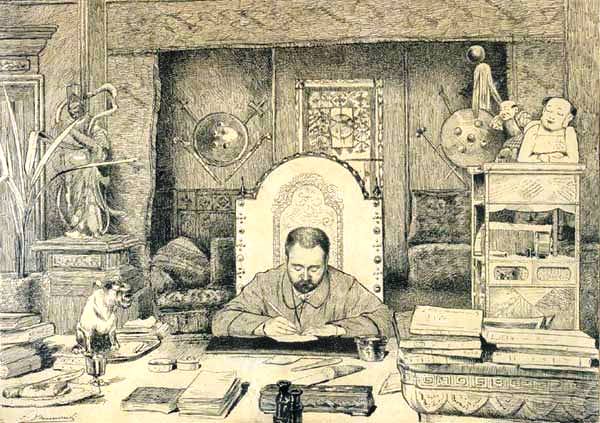
Émile Zola at work in his office. Public domain
Émile Zola
Émile Zola was a French novelist, critic, journalist, playwright and political activist prominent during the late 19th century. He was a major figure in the political liberalization of France and in the exoneration of the falsely accused and convicted army officer Alfred Dreyfus, which was encapsulated in his renowned newspaper article titled J’Accuse…! Alfred Dreyfus was a French Jewish artillery officer whose trial and conviction in 1894 on charges of treason became one of the most tense political dramas in French history. Known today as the Dreyfus affair, the incident eventually ended with Dreyfus’s complete exoneration, aided by Zola’s fierce struggle against anti-Semitism which still echo throughout Europe today.
Lead photo credit : The 20 arrondissements of Paris. Image: The Promenader/ Wikipedia
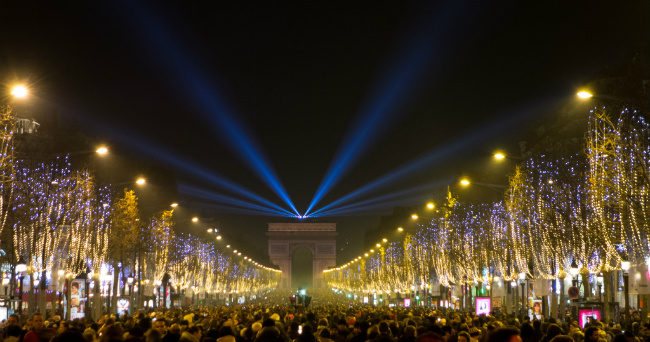

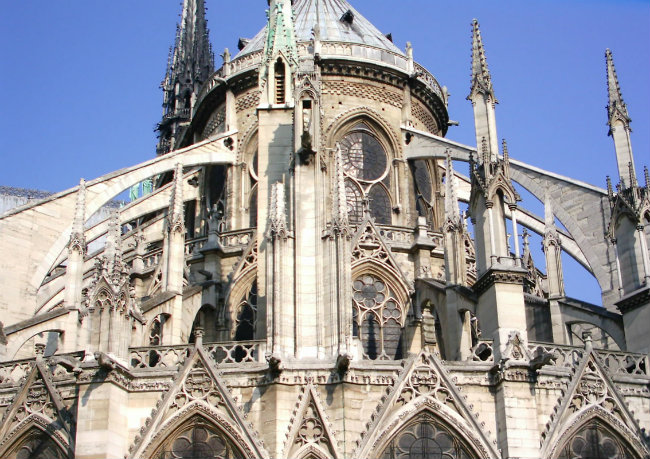
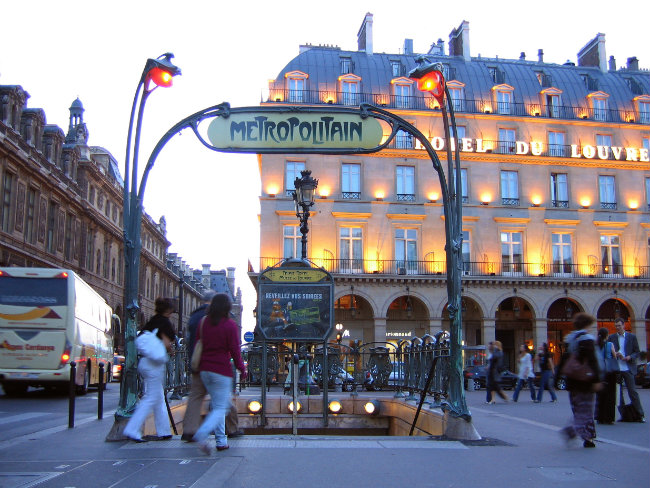
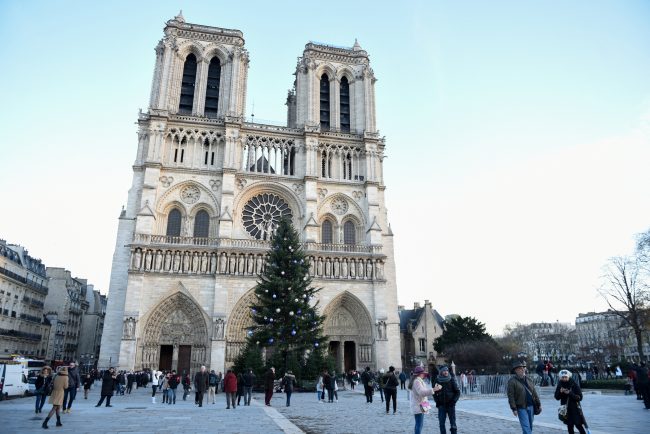



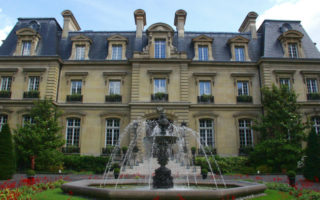

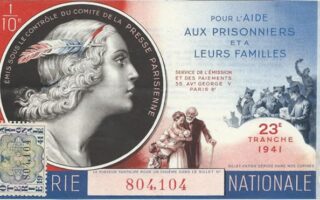
REPLY
REPLY
REPLY
REPLY
REPLY
REPLY
REPLY
REPLY